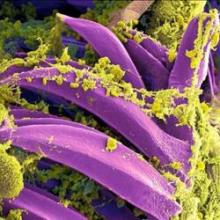The incidence of human plague in the United States in 2015 has been higher than usual, according to the Centers for Disease Control and Prevention.
Since April 1, 2015, there have been 11 cases of plague in six states: Oregon (1), Arizona (2), California (1), Georgia (1), Colorado (4), and New Mexico (2). From 2001-2012, the annual incidence of plague has ranged from 1 to 17, with a median of 3 cases yearly. The cases in Georgia and in California were linked to exposure in or around Yosemite National Park in California. Of the 11 cases, there were 3 deaths.
Plague is carried by fleas living on wild rodents in the western United States. Transmission can occur through flea bite, direct contact with infected tissue or body fluids, or inhaling respiratory droplets from infected animals or people. Traditional mortality ranges from 66% to 93% without antibiotics, but treatment using antimicrobials, such as aminoglycosides, fluoroquinolones, or doxycycline, reduced mortality to about 16%.
It is unclear why the incidence of human plague is significantly higher in 2015 than in previous years, the CDC said.
“Persons engaging in outdoor activities in areas where plague is endemic should wear long pants when possible and use insect repellent on clothing and skin. Persons also should avoid direct contact with ill or dead animals and never feed squirrels, chipmunks, or other rodents. In addition, pet owners should regularly use flea control products on their pets and consult a veterinarian if their pet is ill,” the CDC investigators recommended.
Find the full study here: (MMWR 2015 Aug 25;64 [early release];1-2).


